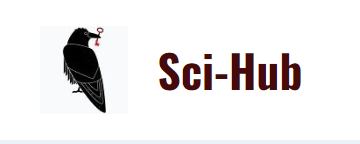HOME | DD
 dondegoab9 — Screenshot 2024-04-04 122110
dondegoab9 — Screenshot 2024-04-04 122110

Published: 2024-04-04 06:54:49 +0000 UTC; Views: 241; Favourites: 0; Downloads: 0
Redirect to original
Description
Unlocking Knowledge: The Controversy and Impact of Sci-Hub
In an age where information is considered a commodity, access to scholarly articles and academic research is often restricted behind paywalls, leaving many individuals without the means to explore the wealth of knowledge that scihub. However, amidst this barrier stands Sci-Hub, a platform that has sparked both admiration and controversy for its mission to liberate scientific literature from these confines. In this article, we delve into the world of Sci-Hub, exploring its origins, impact, and the debates it has ignited within the academic community and beyond.
Origins and Mission:
Founded in 2011 by Alexandra Elbakyan, a Kazakhstani graduate student, Sci-Hub was created with a clear and ambitious goal: to provide free and unrestricted access to scientific research papers to anyone with an internet connection. Elbakyan, frustrated by the barriers she faced in accessing academic papers due to their high sci hub, developed Sci-Hub as a solution to what she saw as a systemic issue of inequality in knowledge dissemination.
Operating outside of traditional publishing frameworks, Sci-Hub utilizes a vast network of proxy servers to bypass paywalls and grant users access to millions of research papers across various disciplines, from physics to medicine to social sciences.
Impact and Controversy:
The impact of Sci-Hub on the academic landscape has been profound. By breaking down barriers to access, it has democratized knowledge, allowing researchers, students, and enthusiasts from around the world to explore cutting-edge research without financial constraints. This has been especially beneficial for individuals in developing countries and those affiliated with institutions that cannot afford expensive journal subscriptions.
However, Sci-Hub's disruptive model has also sparked intense controversy within the academic community and drawn the ire of major publishing houses. Publishers argue that Sci-Hub's actions infringe upon copyright laws and threaten the sustainability of the scholarly publishing ecosystem. They claim that subscription fees are necessary to maintain the quality of journals and support the peer-review process.
Legal Battles and Resilience:
Over the years, Sci-Hub has faced numerous legal challenges from publishers seeking to shut down the platform. Despite these efforts, Sci-Hub has proven to be remarkably resilient, continuously adapting and finding new ways to circumvent restrictions. Elbakyan herself remains undeterred by legal threats, viewing Sci-Hub as a tool for social justice and knowledge equity.
While some view Sci-Hub as a symbol of resistance against corporate greed and information monopolies, others raise concerns about its long-term implications for academic publishing and the sustainability of scholarly communication. The debate surrounding Sci-Hub forces us to confront fundamental questions about the accessibility, ownership, and dissemination of knowledge in the digital age.
Conclusion:
Sci-Hub stands as a polarizing figure in the world of academia, challenging established norms and raising critical questions about the future of scholarly publishing. Whether viewed as a champion of open access or a threat to intellectual property rights, its existence forces stakeholders to reevaluate the current publishing model and explore alternative approaches to ensure that knowledge remains accessible to all. As the debate rages on, one thing remains certain: Sci-Hub has undeniably left an indelible mark on the landscape of scholarly communication, sparking discussions and shaping the future of knowledge dissemination.















